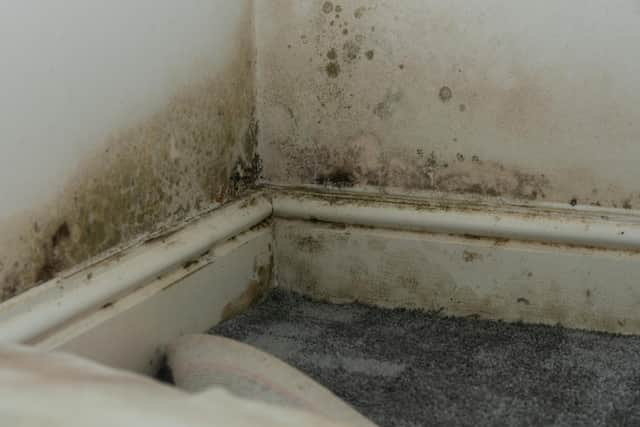Blackpool woman diagnosed with Aspergilliosis a chronic fungal lung disease called by mould: “My life was just stripped away from me”
and live on Freeview channel 276
Lisa McNeil, 52, was diagnosed with Aspergillus Bronchitis in 2011 – a chronic condition that causes tenacious mucus production, breathlessness, wheezing and extreme fatigue.
Lisa, of Pedders Lane, said: “My life was just stripped away from me. One minute i could do things with the kids, next thing just taking them to the park was so exhausting I had to go straight to bed. You feel yourself going to rapidly downhill.”
Advertisement
Hide AdAdvertisement
Hide AdThe retired project manager had suffered a pulmonary embolism at 26, which left her vulnerable to infection and with a long-term condition called bronchiectasis, where airways of the lungs become widened.


How is aspergillus bronchitis diagnosed?
After a severe bout of infection in 2011, Lisa was referred to Professor David Denning - an infectious diseases specialist in Manchester.
Getting a diagnosis for aspergillosis may take some time, as your doctor will rule out other causes first. After extensive scans, blood and mucus tests, an immune system check and a bronchoscopy Lisa was diagnosed with aspergillus bronchitis.
Lisa added: “There was virtually nothing known about the disease in 2011. They say it’s a rare condition but I think it’s just being under-diagnosed and a lot more people are suffering because of this fungus.”
Advertisement
Hide AdAdvertisement
Hide Ad

It is one of several conditions that are caused by Aspergillus fumigatus – a very common type of mould that is found in soil, dead leaves, and crops - and thrives in damp weather. It is also found in damp buildings, and even bedding.For people with healthy immune systems, breathing in Aspergillus isn't harmful. However, for people who have weakened immune systems, breathing in spores can cause an infection in the lungs or sinuses which can spread to other parts of the body.
What is the treatment for aspergillosis?
Lisa now spends an hour each morning taking her medications – including anti-fungals, using a nebuliser. She considers herself ‘very lucky’ to have received good treatment that she has responded well to.
She said: “It’s not a nice treatment and it can cause unpleasant side effects in some people but I have been very lucky.”


Lisa is now a trustee of the Aspergillosis Trust, a charity set up in 2021 to raise awareness of the hidden lung disease, and help people with the condition.
Advertisement
Hide AdAdvertisement
Hide AdAnd she has one important message for people who are suffering with respiratory problems that may be worse than usual.
"Think fungus. Take this information to your GP and don’t be afraid to tell them that you think your symptoms might be caused by fungus. Especially if you have noticed damp and mould in your home.”
Who is at risk of Aspergillosis?
Aspergillosis is rare in people with healthy immune systems. You’re more at risk if you have a long-term lung condition. or a weakened immune system, for example, if you have had chemotherapy or an organ transplant.
You may also be vulnerable if you have had severe flu or coronavirus and were treated with mechanical ventilation (a breathing machine).
Advertisement
Hide AdAdvertisement
Hide AdFor more information visit https://www.aspergillosistrust.org/
How can I reduce mould and damp in my home?
The risk of damp and mould is almost inevitable if you aren’t heating your home enough.
Andrew Bradshaw, a damp and mould specialist from Blackpool, said: “Adequate heating and ventilation in domestic properties is the main prevention of problems associated with condensation and mould growth and, one without the other, will normally not be sufficient in preventing them from being an issue."
Try keeping your heating on longer at a lower temperature. This will help to maintain a higher ambient temperature in the fabric of the building (and it’s more cost effective). Keep the door to the bathroom closed. Moisture from bathrooms and kitchens can cause mould to form in other rooms and areas of the property, such as behind the bed. Use an extractor fan in the kitchen and bathroom, and open the windows while you are cooking. Avoid drying clothes internally, or dry them in the bathroom with the door shut and windows open. Clean down mould with warm soapy water. Avoid brushing surfaces, as you may release spores.
